Motahhare Eslami
Public Procurement for Responsible AI? Understanding U.S. Cities' Practices, Challenges, and Needs
Nov 07, 2024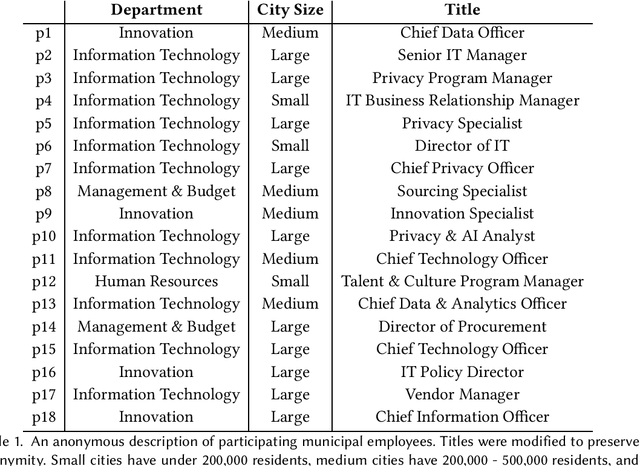
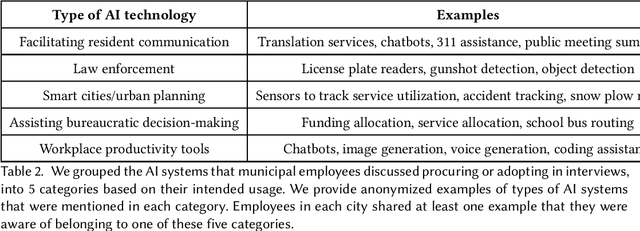
Abstract:Most AI tools adopted by governments are not developed internally, but instead are acquired from third-party vendors in a process called public procurement. While scholars and regulatory proposals have recently turned towards procurement as a site of intervention to encourage responsible AI governance practices, little is known about the practices and needs of city employees in charge of AI procurement. In this paper, we present findings from semi-structured interviews with 18 city employees across 7 US cities. We find that AI acquired by cities often does not go through a conventional public procurement process, posing challenges to oversight and governance. We identify five key types of challenges to leveraging procurement for responsible AI that city employees face when interacting with colleagues, AI vendors, and members of the public. We conclude by discussing recommendations and implications for governments, researchers, and policymakers.
'Simulacrum of Stories': Examining Large Language Models as Qualitative Research Participants
Sep 28, 2024Abstract:The recent excitement around generative models has sparked a wave of proposals suggesting the replacement of human participation and labor in research and development--e.g., through surveys, experiments, and interviews--with synthetic research data generated by large language models (LLMs). We conducted interviews with 19 qualitative researchers to understand their perspectives on this paradigm shift. Initially skeptical, researchers were surprised to see similar narratives emerge in the LLM-generated data when using the interview probe. However, over several conversational turns, they went on to identify fundamental limitations, such as how LLMs foreclose participants' consent and agency, produce responses lacking in palpability and contextual depth, and risk delegitimizing qualitative research methods. We argue that the use of LLMs as proxies for participants enacts the surrogate effect, raising ethical and epistemological concerns that extend beyond the technical limitations of current models to the core of whether LLMs fit within qualitative ways of knowing.
"It Might be Technically Impressive, But It's Practically Useless to Us": Practices, Challenges, and Opportunities for Cross-Functional Collaboration around AI within the News Industry
Sep 18, 2024Abstract:Recently, an increasing number of news organizations have integrated artificial intelligence (AI) into their workflows, leading to a further influx of AI technologists and data workers into the news industry. This has initiated cross-functional collaborations between these professionals and journalists. While prior research has explored the impact of AI-related roles entering the news industry, there is a lack of studies on how cross-functional collaboration unfolds between AI professionals and journalists. Through interviews with 17 journalists, 6 AI technologists, and 3 AI workers with cross-functional experience from leading news organizations, we investigate the current practices, challenges, and opportunities for cross-functional collaboration around AI in today's news industry. We first study how journalists and AI professionals perceive existing cross-collaboration strategies. We further explore the challenges of cross-functional collaboration and provide recommendations for enhancing future cross-functional collaboration around AI in the news industry.
Investigating Practices and Opportunities for Cross-functional Collaboration around AI Fairness in Industry Practice
Jun 10, 2023
Abstract:An emerging body of research indicates that ineffective cross-functional collaboration -- the interdisciplinary work done by industry practitioners across roles -- represents a major barrier to addressing issues of fairness in AI design and development. In this research, we sought to better understand practitioners' current practices and tactics to enact cross-functional collaboration for AI fairness, in order to identify opportunities to support more effective collaboration. We conducted a series of interviews and design workshops with 23 industry practitioners spanning various roles from 17 companies. We found that practitioners engaged in bridging work to overcome frictions in understanding, contextualization, and evaluation around AI fairness across roles. In addition, in organizational contexts with a lack of resources and incentives for fairness work, practitioners often piggybacked on existing requirements (e.g., for privacy assessments) and AI development norms (e.g., the use of quantitative evaluation metrics), although they worry that these tactics may be fundamentally compromised. Finally, we draw attention to the invisible labor that practitioners take on as part of this bridging and piggybacking work to enact interdisciplinary collaboration for fairness. We close by discussing opportunities for both FAccT researchers and AI practitioners to better support cross-functional collaboration for fairness in the design and development of AI systems.
Understanding Practices, Challenges, and Opportunities for User-Driven Algorithm Auditing in Industry Practice
Oct 10, 2022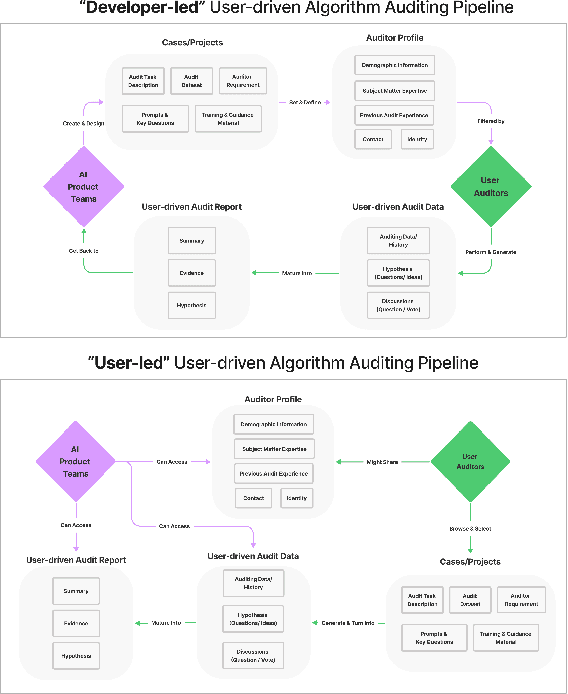
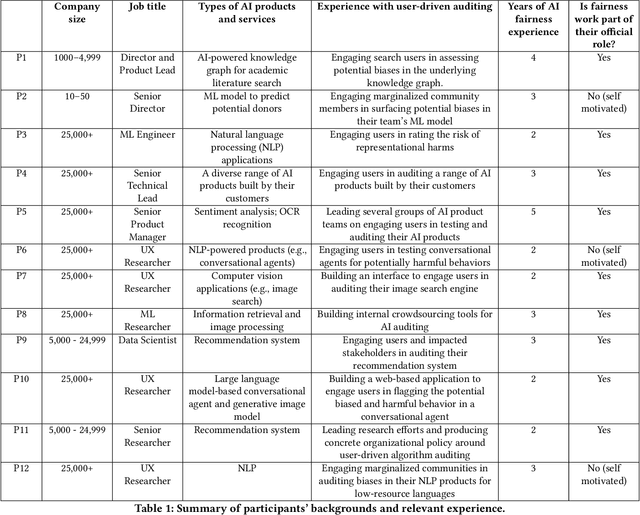
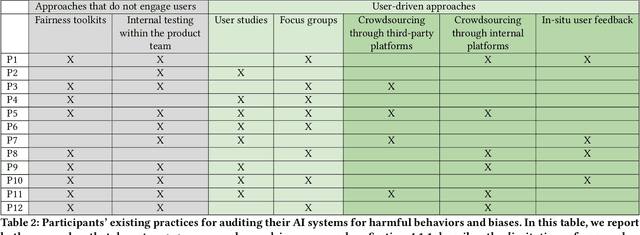
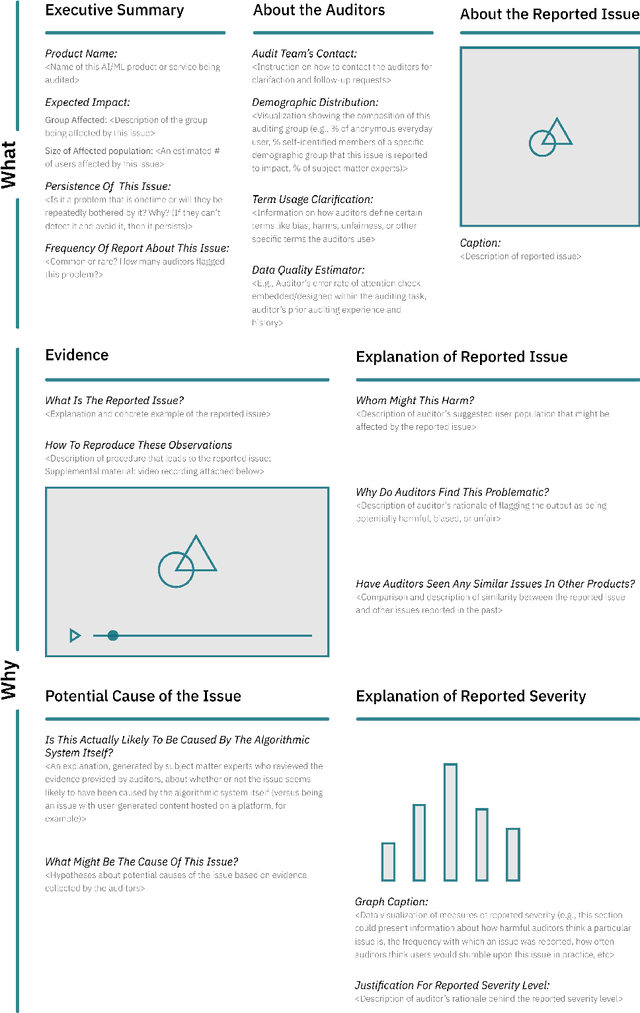
Abstract:Recent years have seen growing interest among both researchers and practitioners in user-driven approaches to algorithm auditing, which directly engage users in detecting problematic behaviors in algorithmic systems. However, we know little about industry practitioners' current practices and challenges around user-driven auditing, nor what opportunities exist for them to better leverage such approaches in practice. To investigate, we conducted a series of interviews and iterative co-design activities with practitioners who employ user-driven auditing approaches in their work. Our findings reveal several challenges practitioners face in appropriately recruiting and incentivizing user auditors, scaffolding user audits, and deriving actionable insights from user-driven audit reports. Furthermore, practitioners shared organizational obstacles to user-driven auditing, surfacing a complex relationship between practitioners and user auditors. Based on these findings, we discuss opportunities for future HCI research to help realize the potential (and mitigate risks) of user-driven auditing in industry practice.
 Add to Chrome
Add to Chrome Add to Firefox
Add to Firefox Add to Edge
Add to Edge